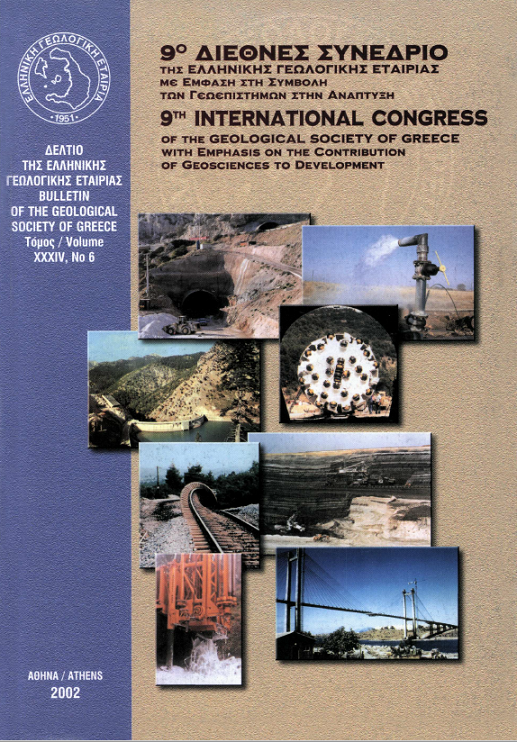New constraints for the alpine HP metamorphism of the Ios basement, Cyclades, Greece
Résumé
The pre-Alpine basement of the Ios Island involves large Variscan granitoid bodies intruded into metasediments that had already been metamorphosed under upper amphibolite facies conditions, as it is indicated by residual migmatitic textures and deformed muscovite pegmatites. The Alpine HP-metamorphism, documented on various cycladic islands, has, also, affected the basement rocks of Ios. Pressures of '25 Kbar and temperatures of '540 °C, are estimated for the Alpine HP event, applying the chloritoid-chlorite and garnetclinopyroxene geothermometers, and the garnet-phengite-omphacite and garnet-rutile-quartz-sphene-clinozoisite geobarometers. Garnet-hornblende geothermometry yielded temperatures of '520 °C and garnet-chlorite geothermobarometry yielded temperatures of 450 °C at 15 Kbar. This suggests that, at least the first stages of decompression were accompanied by cooling, indicating a rapid exhumation, related to tectonic processes.
Article Details
- Comment citer
-
PERRAKI, M., & MPOSKOS, E. (2001). New constraints for the alpine HP metamorphism of the Ios basement, Cyclades, Greece. Bulletin of the Geological Society of Greece, 34(3), 977–984. https://doi.org/10.12681/bgsg.17130
- Rubrique
- Petrology

Ce travail est disponible sous licence Creative Commons Attribution - Pas d’Utilisation Commerciale 4.0 International.
Authors who publish with this journal agree to the following terms:
Authors retain copyright and grant the journal right of first publication with the work simultaneously licensed under a Creative Commons Attribution Non-Commercial License that allows others to share the work with an acknowledgement of the work's authorship and initial publication in this journal.
Authors are able to enter into separate, additional contractual arrangements for the non-exclusive distribution of the journal's published version of the work (e.g. post it to an institutional repository or publish it in a book), with an acknowledgement of its initial publication in this journal. Authors are permitted and encouraged to post their work online (preferably in institutional repositories or on their website) prior to and during the submission process, as it can lead to productive exchanges, as well as earlier and greater citation of published work.






